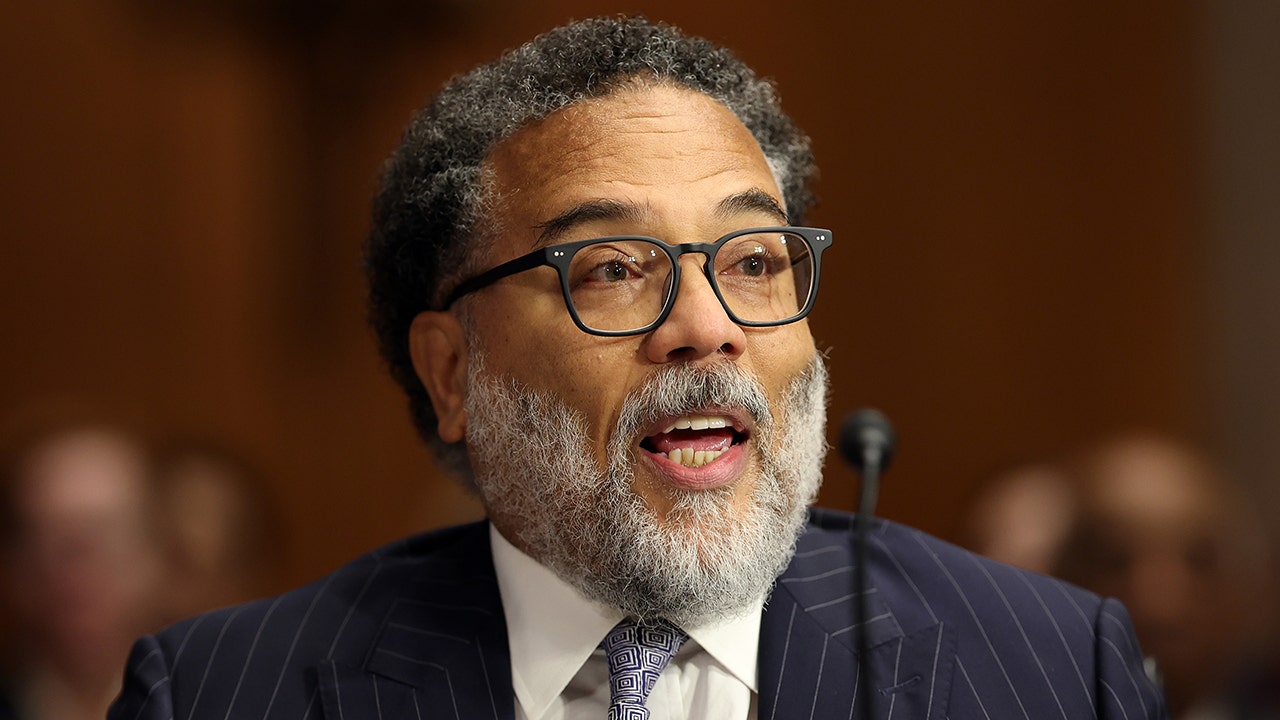Education
Where Are the Students?

If you’re a child — or a former child — you know how hard it can be to summon the energy to leave the house each day for school. It’s early in the morning, and you are tired. Maybe you have a test or a social situation that’s making you anxious. Staying in bed often seems easier.
For as long as schools have existed, so have these morning struggles. Nonetheless, children overcame them almost every day, sometimes with a strong nudge from parents. Going to school was the normal thing to do.
Then, suddenly, it wasn’t.
The long school closures during the Covid pandemic were the biggest disruption in the history of modern American education. And those closures changed the way many students and parents think about school. Attendance, in short, has come to feel more optional than it once did, and absenteeism has soared, remaining high even as Covid has stopped dominating everyday life.
On an average day last year — the 2022-23 school year — close to 10 percent of K-12 students were not there, preliminary state data suggests. About one quarter of U.S. students qualified as chronically absent, meaning that they missed at least 10 percent of school days (or about three and a half weeks). That’s a vastly higher share than before Covid.
“I’m just stunned by the magnitude,” said Thomas Dee, a Stanford economist who has conducted the most comprehensive study on the issue.
This surge of absenteeism is one more problem confronting schools as they reopen for a new academic year. Students still have not made up the ground they lost during the pandemic, and it’s much harder for them to do so if they are missing from the classroom.
Losing the habit
In Dee’s study, he looked for explanations for the trend, and the obvious suspects didn’t explain it. Places with a greater Covid spread did not have higher lingering levels of absenteeism, for instance. The biggest reason for the rise seems to be simply that students have fallen out of the habit of going to school every day.
Consistent with this theory is the fact that absenteeism has risen more in states where schools remained closed for longer during the pandemic, like California and New Mexico (and in Washington, D.C.). The chart below shows the correlation between Dee’s state data on chronic absenteeism and data from Thomas Kane, a Harvard economist, on the share of students in each state who in 2020-21 were enrolled in districts where most students were remote:
“For almost two years, we told families that school can look different and that schoolwork could be accomplished in times outside of the traditional 8-to-3 day,” Elmer Roldan, who runs a dropout prevention group, told The Los Angeles Times. “Families got used to that.”
Lisa Damour, a psychologist and the author of “The Emotional Lives of Teenagers,” points out that parents think they are doing the right thing when they allow an anxious child to skip a day of school. She has deep empathy for these parents, she said. Doing so often makes the child feel better in the moment. But there are costs.
“The most fundamental thing for adults to understand is that avoidance feeds anxiety,” Damour told me. “When any of us are fearful, our instinct is to avoid. But the problem with giving in to that anxiety is that avoidance is highly reinforcing.” The more often students skip school, the harder it becomes to get back in the habit of going.
Aggravating inequality
I know that some readers will wonder whether families are making a rational choice by keeping their children home, given all the problems with schools today: the unhealthily early start times for many high schools; the political fights over curriculum; the bullying and the vaping; the inequalities that afflict so many areas of American life.
And the rise in chronic absenteeism is indeed a sign that schools need help. One promising step would be to make teaching a more appealing job, Damour notes, in order to attract more great teachers.
Still, it’s worth remembering that the rise of absenteeism isn’t solving these larger problems. It is adding to those problems.
Classrooms are more chaotic places when many students are there one day and missing the next. Educational inequality increases too, because absenteeism has risen more among disadvantaged students, including students with disabilities and those from lower-income households. “Studies show that even after adjusting for poverty levels and race, children who skip more school get significantly worse grades,” The Economist explained recently.
As Hedy Chang, who runs Attendance Works, a nonprofit group focused on the problem, told The Associated Press, “The long-term consequences of disengaging from school are devastating.”
Many schools are now trying to reduce absenteeism by reaching out to families. Some school officials are visiting homes in person, while others are sending texts to parents. (This Times story goes into more detail.)
It will be a hard problem to solve. Dee’s study focused on 2021-22 — which was two years ago, and the first year after the extended Covid closures — but he notes that absenteeism appears to have fallen only slightly last year. In Connecticut, which has some of the best data (and lower absentee rates than most states), 7.8 percent of students missed school on an average day two years ago, a far higher level than before the pandemic. Last year, the rate dipped only to 7.6 percent.
“The bass that made the Beatles”: In 1961, Paul McCartney bought a bass guitar that he played as the Beatles became famous. It can be heard on songs like “Love Me Do” and “Twist and Shout.” But it vanished eight years later, and has been missing since.
The Lost Bass Project, started by three Beatles fans, hopes to find it — and hundreds of people have responded to a request for tips.
More on culture
-
Steve Harwell, the former singer of Smash Mouth, known for the ’90s hits “All Star” and “Walkin’ on the Sun,” died at 56.
-
Thousands of people left the Burning Man festival after being stranded in the mud.
THE MORNING RECOMMENDS …

Education
Video: Several Killed in Wisconsin School Shooting, Including Juvenile Suspect

new video loaded: Several Killed in Wisconsin School Shooting, Including Juvenile Suspect
transcript
transcript
Several Killed in Wisconsin School Shooting, Including Juvenile Suspect
The police responded to a shooting at a private Christian school in Madison, Wis., on Monday.
-
Around 10:57 a.m., our officers were responding to a call of an active shooter at the Abundant Life Christian School here in Madison. When officers arrived, they found multiple victims suffering from gunshot wounds. Officers located a juvenile who they believe was responsible for this deceased in the building. I’m feeling a little dismayed now, so close to Christmas. Every child, every person in that building is a victim and will be a victim forever. These types of trauma don’t just go away.
Recent episodes in Guns & Gun Violence
Education
Video: Biden Apologizes for U.S. Mistreatment of Native American Children

new video loaded: Biden Apologizes for U.S. Mistreatment of Native American Children
transcript
transcript
Biden Apologizes for U.S. Mistreatment of Native American Children
President Biden offered a formal apology on Friday on behalf of the U.S. government for the abuse of Native American children from the early 1800s to the late 1960s.
-
The Federal government has never, never formally apologized for what happened until today. I formally apologize. It’s long, long, long overdue. Quite frankly, there’s no excuse that this apology took 50 years to make. I know no apology can or will make up for what was lost during the darkness of the federal boarding school policy. But today, we’re finally moving forward into the light.
Recent episodes in Politics
Education
Video: Los Angeles Bus Hijacked at Gunpoint

new video loaded: Los Angeles Bus Hijacked at Gunpoint
transcript
transcript
Los Angeles Bus Hijacked at Gunpoint
The person suspected of hijacking a bus which killed one person, was taken into custody after an hourlong pursuit by the Los Angeles Police Department early Wednesday morning.
-
“Get him.”
Recent episodes in Guns & Gun Violence
-

 Business7 days ago
Business7 days agoThese are the top 7 issues facing the struggling restaurant industry in 2025
-

 Culture7 days ago
Culture7 days agoThe 25 worst losses in college football history, including Baylor’s 2024 entry at Colorado
-

 Sports6 days ago
Sports6 days agoThe top out-of-contract players available as free transfers: Kimmich, De Bruyne, Van Dijk…
-

 Politics5 days ago
Politics5 days agoNew Orleans attacker had 'remote detonator' for explosives in French Quarter, Biden says
-

 Politics5 days ago
Politics5 days agoCarter's judicial picks reshaped the federal bench across the country
-

 Politics3 days ago
Politics3 days agoWho Are the Recipients of the Presidential Medal of Freedom?
-

 Health2 days ago
Health2 days agoOzempic ‘microdosing’ is the new weight-loss trend: Should you try it?
-

 World7 days ago
World7 days agoIvory Coast says French troops to leave country after decades














